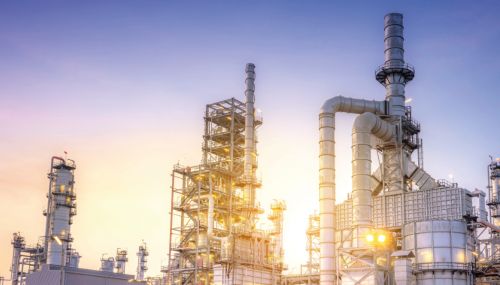All
Managing Fuels for Optimum Results
by Paul Nazzaro, Advanced Fuel Solutions

Regulations push emissions targets down, but proper fuel quality standards can keep the industry ahead of the game
Over the past several decades, volumes of governmental regulations have been enacted to address concerns about the environment and U.S. dependence on fossil fuels. Initially, foreign sources of crude oil were targeted, but more recently this has broadened to domestic carbon-based inputs as well. Federal legislation to address air quality dates back to 1955, but the Clean Air Act as we know it largely comes from bipartisan amendments enacted in 1970, 1977 and 1990. Who knew way back then that we would be working exhaustively to decarbonize – a word I doubt even existed in 1990, the 1970s and certainly in 1955 as we know it today – our industry well into the mid-2020s to maintain a place at the table.
In the earliest stages, gasoline-powered engines were the focus of this regulatory attention. Eventually, cleaner diesel engines became a high priority as well. Cleaner-burning fuels necessitated a more sophisticated power plant to combust them, and engine manufacturers went to work on optimizing their engines to operate more efficiently and cleanly, and adding complex aftertreatment systems to eradicate most of the remaining emissions that optimized combustion techniques could not. Particulate matter, nitrogen oxides (NOx), aromatics, carbon monoxide, unburned hydrocarbons and other harmful emissions that directly and immediately affect air quality – and eventually greenhouse gas (GHG) emissions as the fight against climate change took hold – were targeted. For the most part, modern engine designs coupled with after-treatment systems drastically reduced those harmful pollutants. Now, regulators want to further reduce to virtually nothing what few NOx or other emissions still exit the tailpipe. Complicating matters even more is the unrelenting drive toward net-zero carbon emissions – and not in the most realistic timeframe either – so neither GHG nor noxious air pollutants are emitted from vehicles.
To achieve these combined regulatory mandates of eliminating GHG and air-pollutant emissions, low-carbon and exceptionally clean fuels are necessary. Cleaner-burning fuels like biodiesel, whose ASTM fuel-quality specification, D6751, was first passed more than 20 years ago, fit the bill. But, just as the diesel-fuel standard had to evolve to meet ultra-low sulfur requirements for after-treatment systems designed to significantly reduce NOx and particulate matter, the biodiesel spec has also evolved over the years – nearly two dozen times, in fact.
Most recently, a new low-metals grade of biodiesel was passed this year, further decreasing the total allowable levels of sodium, potassium, calcium and magnesium to just 4 parts per million (ppm), down from the already-low level of 10 ppm. Trace levels of metals can be found in biodiesel as residues from catalysts used in processing or from purification practices. Even though a vast majority of biodiesel in the U.S. and Canada never comes close to these limits, according to data from National Renewable Energy Laboratory’s annual quality surveys, the industry was obligated to allay concerns from original equipment manufacturers (OEMs) that are, as mentioned above, faced yet again with further reducing NOx output from their diesel vehicles. As some OEMs move after-treatment catalysts closer to exhaust manifolds, a design known as “close coupled,” the threat of trace metals in fuel becomes greater. Therefore, the biodiesel industry worked collaboratively, as it has done many times over the years, to tighten the quality specification and keep its fuel top of mind for OEMs as a viable option for new vehicles.
Blending
Theoretically, when two on-spec fuels – in this case diesel (D975) and biodiesel (D6751) – are blended, one should end up with an on-spec product. But there are considerations that come into play here.
First, ASTM specifications are minimum standards. We would never tell our children to strive for the minimum, and we ought to not accept that from our fuel suppliers, either. Taking it up a notch to meet rigorous demands of high-pressure common-rail (HPCR) fuel-injection systems, lengthy fuel-storage times and challenges with supply-chain fungibility can take minimum specification values below par, making consumer-desired performance a gamble. It is not uncommon to contractually require specific fuel-quality terms with suppliers.
Secondly, how those fuels are blended together matters a great deal. In-line or proportional blending, in which a metered, precise, accurate and uniform ratio of the desired blend level is achieved, is highly preferred to rudimentary, imprecise and sometimes problematic splash blending. Splash blending, which should be avoided altogether, is when one fuel is pumped into a tank with the other poured on top with the hope they properly comingle.
And finally, third, we must deal with the fact that, oftentimes, properly blended, on-spec, production-fresh fuel is placed into prehistoric storage systems in which anything can be – and often is – present. Any fuel, even the more-recently emerging renewable diesel (hydrotreated vegetable oil or HVO) with its lauded quality standards, is subjected to a supply chain challenged by storage tanks that, in many cases, require housekeeping attention.
The Almighty Oracle
Today, one can go to Google and find answers to pretty much any question they might have – if one has the time, patience and basic knowledge of the subject matter to wade through search results and identify responses that aren’t utter nonsense. Let’s try one. Question: “How do I protect my diesel fuel or heating oil in a tank from poor performance?” Answer: “Using a fuel stabilizer that is specifically formulated for diesel fuel will prevent the fuel from degrading and enhance performance. It is imperative that the stabilizer is specifically for diesel fuel, as standard fuel stabilizers will not be effective.” There you go. In 30 seconds, you spared yourself from a consultant charging for this “sage” advice. Of course, unless the guidance found on the internet is followed, nothing changes. And, naturally, this is only one small piece of a much larger, holistic approach to fuel quality.
Links in the Chain
When the subject of fuel quality is raised in industry circles, people casually scatter. For years, the protocol has been to check fuel prices at the closing bell and be prepared to head to the terminal for resupply late that night or early the next morning. The question is, are you making that decision on where to load solely on price? Hopefully, the balance of quality and price is weighed because selling fuel to today’s more intelligent and sophisticated buyer – especially those paying attention to environmental, social and corporate governance (ESG) guidelines – has changed the transaction narrative.
A simple perusal through any fuel-guidelines publication will make your eyes roll into the back of your head. Standards, specifications, additives, changes in diesel engines, the act and impact of low-carbon liquid-fuels blending and, of course, the guidance of ASTM are important, certainly, but one could only hope their fuel is as dry as the reading.
From the perspective of professionals committed to ensuring the fuels you buy, sell and consume for your own business and personal use are topnotch, there are many dimensions to monitoring and managing fuel quality. We can look at injection-system performance, fuel storage, protection of materials with which fuel systems are constructed, diesel particulate traps, water, microbial contamination, managing cold-weather operability as well as storage stability of a wide variety of fuels. You simply cannot take responsibility for all these parameters, for the supply chain is vast, fluid and riddled with weak links. However, it is incumbent upon everyone in the chain to do their part, because when they don’t, one weak link can break the chain.
Water is arguably one of the most important parameters to manage. Many groups handle your fuel before it loads into your truck for delivery to your customer. Those who manage the fuel before you are responsible for ensuring that the fuels they provide meet or exceed those minimum ASTM standards, including water, for one. Water is the most common contaminant that causes equipment problems and is almost inevitable in stored fuels due to the number of opportunities for moisture to form. This includes free water in pipelines, ship and barge ballast water, rainwater leaking past seals and moist outside air entering the vents of a fixed storage tank.
Eradicating water requires tank monitoring where possible. If water is identified through an electronic-monitoring system or the basic stick-and-paste methodology, it must be addressed immediately. Pump it out, dry it out, but just get it out, period. If it sits, warm temperatures in concert with that water will drive microbial contamination, which spawns an entirely new challenge.
Growth of microorganisms in diesel fuels is not new. When ultra-low sulfur requirements went into effect years ago, the change in fuel composition due to desulfurization directly impacted chemistries responsible for inhibiting microorganism growth. Microbes consume fuel, generating sludge and short-chain acids as metabolic byproducts. These acids can cause corrosion problems in the tank.
Microbial contamination can be minimized if tank owners establish and implement a proactive review of their storage system every quarter. Keeping tanks water-free, incorporating a desiccant dryer on the vent alarm and immediately removing water when found can, all together, help prevent big problems from these little lifeforms.
If everyone in the fuel-supply chain simply does their part and manages that over which they have control, then perhaps regulators could find other industries to constrict while we do what we know best: make, store, treat, distribute and sell high-quality, increasingly lower-carbon fuels.
Paul Nazzaro is president of Advanced Fuel Solutions Inc. For more information on fuel quality, additives and premium treatment solutions, contact him at 978-880-5338 or paulsr@yourfuelsolution.com.
Related Posts
 Care and Treatment of Biodiesel Blends
Care and Treatment of Biodiesel Blends
Posted on December 18, 2025
 EIA Winter Fuels Outlook
EIA Winter Fuels Outlook
Posted on December 18, 2025
 How to Set Your Business Apart with Renewable Propane
How to Set Your Business Apart with Renewable Propane
Posted on October 16, 2025
 EIA Report: Biodiesel and Renewable Diesel Imports Fall Sharply
EIA Report: Biodiesel and Renewable Diesel Imports Fall Sharply
Posted on October 16, 2025
Enter your email to receive important news and article updates.
